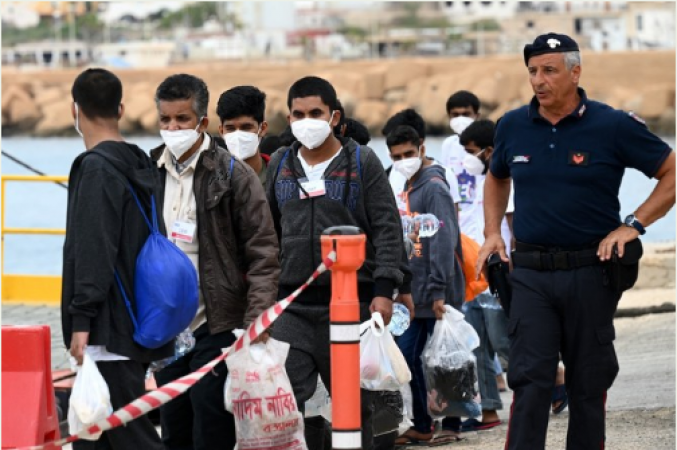
London: On September 13, 2023, more than 2,000 African migrants, predominantly hailing from Sudan and Eritrea, arrived in southern Italy via boat, making landfall in the ports of Lampedusa and Pozzallo.
Their arrival underscores an ongoing surge in migrant crossings to Italy over recent months, a situation that has placed considerable strain on the nation's asylum system.
The influx of migrants into Italy has been steadily rising. In the first eight months of 2023 alone, over 30,000 migrants have arrived, compared to just over 20,000 during the same period in the previous year.
This surge in arrivals reflects the dire circumstances that these individuals are fleeing, primarily driven by conflict and poverty in their home countries.
To escape these perilous conditions, migrants are often compelled to embark on hazardous journeys across the Mediterranean Sea, crammed into overcrowded and unseaworthy vessels. The desperation of their situation compels them to take such life-threatening risks.
The influx of migrants has placed significant pressure on Italy's asylum system, which is already stretched to its limits. The Italian government has expressed concern over its capacity to manage the increasing numbers of arrivals and the subsequent need for shelter, support, and processing of asylum claims.
Also Read: Poland Procures Nearly 500 HIMARS Launchers in Landmark Defense Deal
While Italy remains committed to rescuing migrants at sea, the government has called upon the European Union (EU) for increased assistance in dealing with the ongoing crisis. The EU has pledged to provide additional funding to support Italy's asylum system, but consensus on a comprehensive EU-wide migration policy has remained elusive.
The recent influx of migrants arrived in two separate groups. The first group, consisting of approximately 1,200 individuals, landed in Lampedusa, while the second group, comprising about 800 people, arrived in Pozzallo. Among the migrants, there were mostly young men, but women and children were also part of the arrivals.
Upon arrival, the migrants were transported to reception centers in southern Italy, where they will undergo processing and interviews by authorities to determine their asylum status. This step is crucial in assessing the eligibility of individuals for asylum and ensuring their rights are upheld.
The arrival of migrants in Italy has sparked mixed reactions among the population. While some have welcomed the newcomers with compassion and support, others have voiced concerns about the potential strain on the country's resources.
This diversity of reactions reflects the complexity of the situation and the ongoing debate about the responsibilities and challenges associated with migrant arrivals.
The situation in southern Italy is multifaceted, with no straightforward solution in sight. The Italian government, together with its European partners, is working tirelessly to manage the rising influx of migrants and address the associated challenges.
However, it is a protracted and demanding process that demands cooperation, resource allocation, and careful consideration of the humanitarian aspects of the crisis.
Also Read: Exploring Europe's Enigmatic Megalithic Structures
The surge in migrant arrivals in Italy, particularly in the southern regions of Lampedusa and Pozzallo, is emblematic of the broader challenges faced by nations dealing with mass migration.
Italy, while grappling with the immediate impact of these arrivals, is also advocating for a unified EU approach to address this issue comprehensively.
As the situation evolves, it underscores the pressing need for international collaboration and a nuanced understanding of the humanitarian dimensions of the crisis.